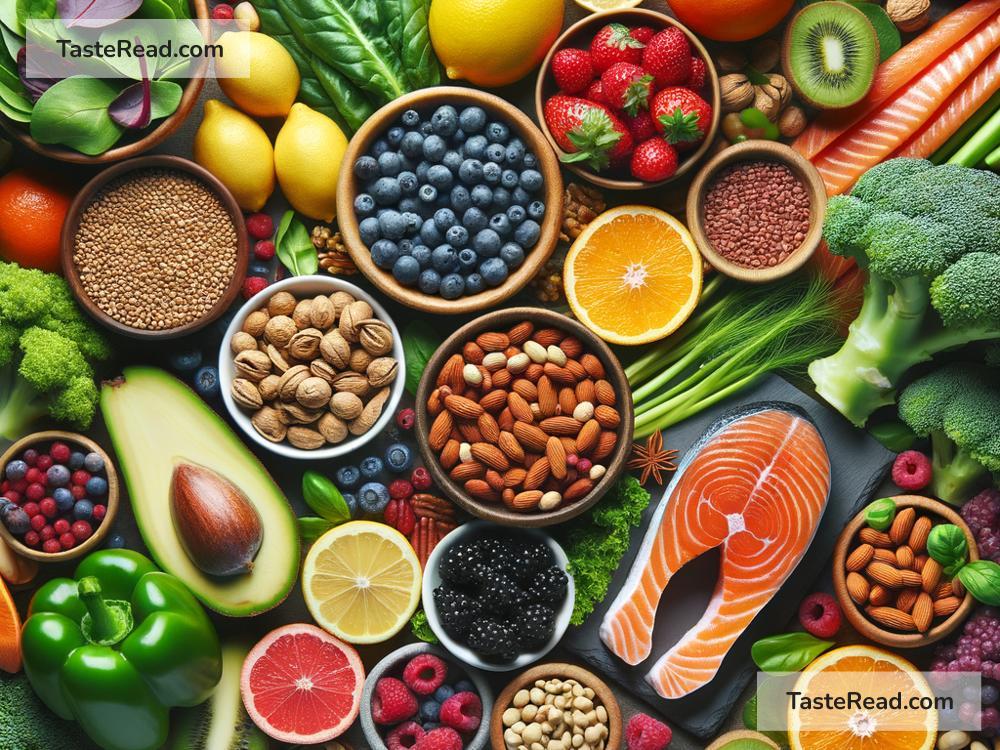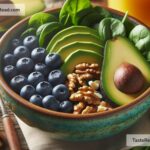Foods That Reduce the Risk of Pulmonary Embolism
Pulmonary embolism (PE) is a condition caused by a blood clot blocking the blood flow in the lungs. It is a serious health issue that can lead to life-threatening complications if not treated. While medication and medical care are essential for managing this condition, lifestyle changes, including diet, can play an important role in prevention. Eating foods that improve blood flow, reduce the chance of clots, and support heart health can help lower the risk of pulmonary embolism.
Let’s explore foods that contribute to reducing the risk of pulmonary embolism in simple terms.
1. Leafy Greens
Leafy greens like spinach, kale, and Swiss chard are full of vitamin K. This nutrient plays a role in regulating blood clotting. While vitamin K can help prevent excessive bleeding, foods rich in this vitamin also help maintain a balance so your blood isn’t prone to clotting unnecessarily.
Additionally, leafy greens are packed with antioxidants and fiber, which can improve heart health and keep your blood vessels functioning well.
2. Fatty Fish
Fatty fish such as salmon, mackerel, and tuna are excellent sources of omega-3 fatty acids. These healthy fats reduce inflammation in your body and can lower your likelihood of developing blood clots. Omega-3s also improve circulation, keeping your blood flowing smoothly.
Eating fatty fish two to three times a week is a great way to support heart health and reduce the risk of pulmonary embolism.
3. Whole Grains
Whole grains like oats, brown rice, quinoa, and whole-wheat bread help reduce your risk of blood clots. These foods are high in fiber, which maintains healthy cholesterol levels and prevents the buildup of plaque in arteries. When your arteries are free of plaque, blood flows easily and the risk of clot formation decreases.
Swap refined grains (like white bread or sugary cereals) for whole grains in your daily diet to reap these benefits.
4. Garlic
Garlic is not just a flavorful ingredient—it’s also a natural blood thinner. This means it helps prevent the formation of dangerous blood clots. Garlic contains a compound called allicin, which improves blood flow and reduces clotting risk.
For the best results, eat raw or lightly cooked garlic to preserve its beneficial compounds.
5. Berries
Berries like blueberries, strawberries, raspberries, and blackberries are loaded with antioxidants. These antioxidants, especially flavonoids, help improve the health of blood vessels and reduce inflammation. By keeping your blood vessels strong and flexible, berries lower the risk of clots forming.
Enjoy a handful of berries as a snack, add them to your breakfast, or blend them into smoothies.
6. Nuts and Seeds
Nuts like almonds, walnuts, and pistachios, as well as seeds like chia seeds and flaxseeds, are rich in healthy fats, fiber, and vitamin E. These nutrients keep your blood vessels healthy and support heart health. Vitamin E, in particular, has mild blood-thinning properties, further protecting against clot formation.
Include nuts and seeds in your diet by sprinkling them on salads or eating them as a snack.
7. Citrus Fruits
Citrus fruits like oranges, lemons, grapefruits, and limes contain vitamin C and antioxidants that help strengthen blood vessels and improve circulation. Healthy blood vessels are less prone to developing clots. Citrus fruits also fight inflammation, which can otherwise increase the risk of clotting.
Drink a glass of fresh orange juice or enjoy a piece of citrus fruit daily to improve your vascular health.
8. Turmeric
Turmeric is a bright yellow spice often used in cooking. It contains curcumin, a compound that reduces inflammation and keeps blood flowing smoothly. Turmeric may also act as a natural blood thinner.
To include turmeric in your diet, you can add it to soups, stews, rice dishes, or even your morning smoothie.
9. Green Tea
Green tea is packed with antioxidants that improve heart health and circulation. Regularly drinking green tea can help lower inflammation and reduce the risk of blood clots. It’s a simple, soothing beverage that can benefit your overall vascular health.
Try swapping sugary drinks for green tea to keep your blood vessels happy.
10. Tomatoes
Tomatoes are rich in lycopene, a powerful antioxidant that promotes good blood flow and protects your blood vessels from damage. Eating tomatoes regularly can help lower the risk of plaque buildup and reduce clotting risk.
You can enjoy tomatoes in salads, soups, sauces, or just raw as a healthy snack.
Final Thoughts
While pulmonary embolism can be caused by different factors like genetics, sedentary behavior, or underlying medical conditions, making healthier dietary choices is a proactive step towards prevention. Incorporating foods like leafy greens, fatty fish, whole grains, and berries into your meals can improve circulation, reduce inflammation, and lower the risk of blood clots.
Remember, it’s not about eating just one of these foods—it’s about adopting a balanced diet that includes a variety of nutrient-rich options for better overall health. Combine your healthy eating habits with regular physical activity, staying hydrated, and avoiding smoking to further reduce the risk of pulmonary embolism.
Always consult your healthcare provider before making major changes to your diet or lifestyle, especially if you’re already at risk of blood clots or have a history of pulmonary embolism. Making small, consistent changes today can lead to big health improvements in the future!


